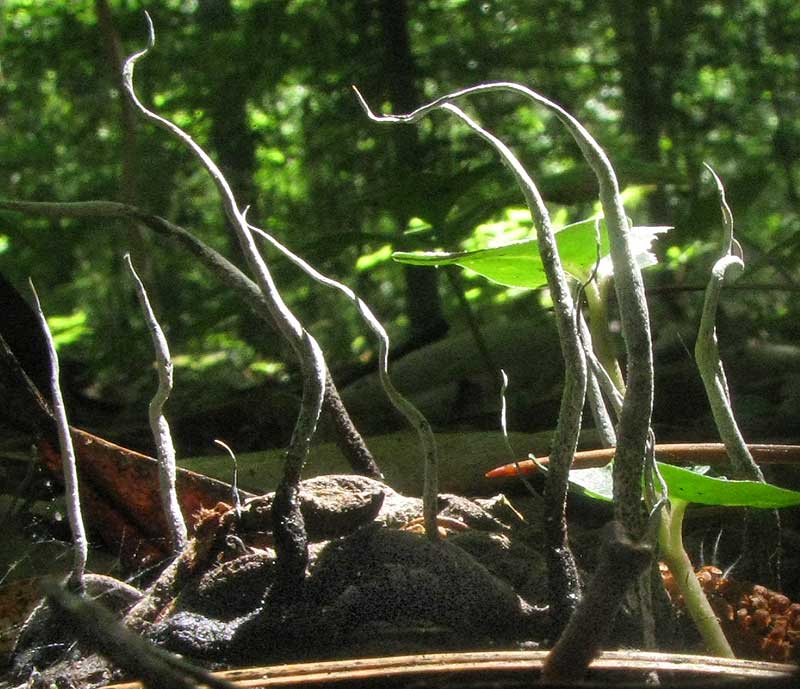Excerpts from Jim Conrad's
Naturalist Newsletter

from the June 24, 2012 Newsletter issued from the woods of the Loess Hill Region a few miles east of Natchez, Mississippi, USA
MAGNOLIA-CONE XYLARIA
In deep shade on the floor of a bottomland forest in nearby Homochitto National Forest, slender, tapering, 1¼-inch (3cm) little black fingers with white fingertips arose from a decaying Southern Magnolia fruit from last year. Each "finger" issued from a different chamber, or follicle, of the fruit. You can see the strange little community above.
The graceful little fingers are the spore-producing fruiting bodies of an Ascomycota fungus, a fungus phylum incorporating the mildews, molds and famously edible morel mushrooms. *UPDATE: I identified this as the very similar Candlesnuff, Xylaria carpophila, but years later when I uploaded the pictures to iNaturalist, user "pynklynx" recognized it as the Magnolia-cone Xylaria, XYLARIA MAGNOLIAE -- a species found only on the decaying cones of magnolia trees. I hadn't realized such a species exists. Members of the genus Xylaria decompose wood and other plant debris.
This January in the Yucatan we met a much larger, thicker, more common member of the genus Xylaria -- "Dead-Man's Fingers," growing on a woodpile near my hut.